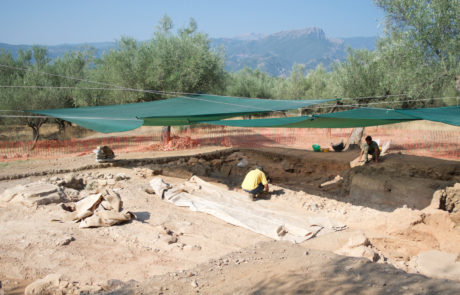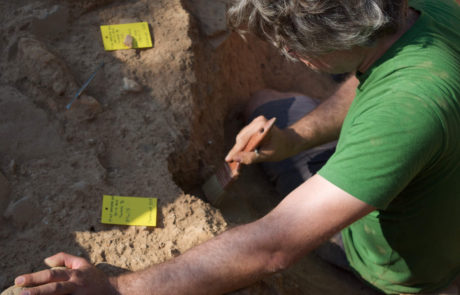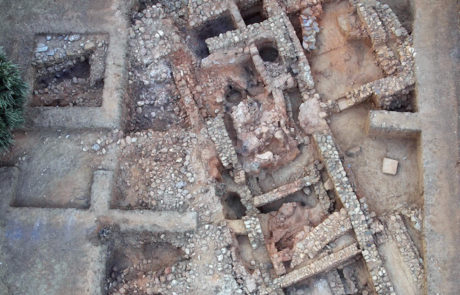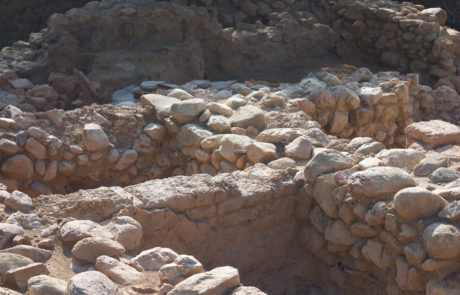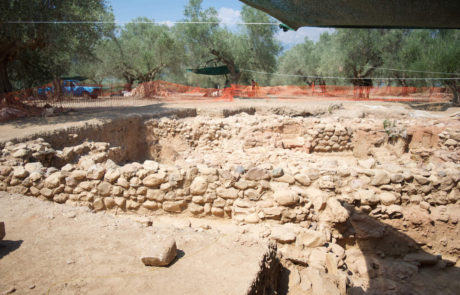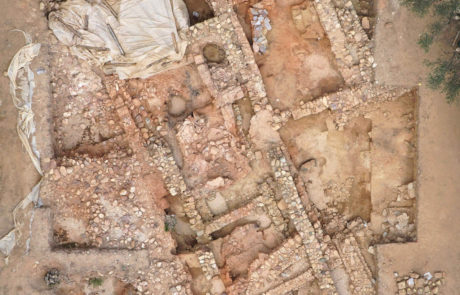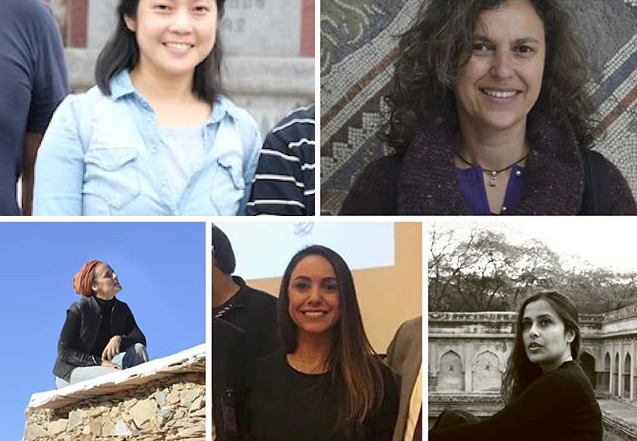Ayios Vasileios, Greece
An unprecedented 21st century find dating to the Late Bronze Age, Ayios Vasileios is the only known Mycenean palace in the region surrounding Sparta, the ancient metropolis of Homer’s Iliad. While this site lacks the colonnaded structures we associate with Greek ruins, archaeologists working under the Director Emerita of the Antiquity Service at Sparta, Adamantia Vasilogamvrou and the Archaeological Society at Athens have unearthed rare antiquities including a male figurine carved in ivory, a drinking cup adorned with a bull’s head, mural fragments and twenty bronze swords. Among the most important finds to date are clay tablets written in Linear B, a pre-alphabetic Greek script.
Excavations revealed the establishment of a permanent settlement here by the 17th or 16th century BCE, covering some 210,000 square meters across a chain of commanding hills, with the palace at the center. At the end of the 14th century BCE, a ferocious fire destroyed the palace, splitting its stone foundations. The site lay fallow for centuries afterwards, until the Late Byzantine period when the church of Ayios Vasileios was constructed, possibly with stone originally from the palace.
Ironically, the fire that destroyed Ayios Vasileios now sheds light on the ancient site. Written on unbaked clay tablets, palace records were routinely discarded after use however the conflagration baked these tablets, thereby preserving them. The only archives discovered from this period in archaic Greece, these ledgers offer valuable clues about the palace’s function and regional significance.
That inferno also presents one of Ayios Vasileios’ most significant conservation challenges. Fired beyond their vitrification points, the adobe structures, clay walls, mortars, mud bricks, and pottery fused together forming entangled ruins difficult to separate while preserving valuable information.
What is clear, Ayios Vasileios will require extensive conservation work. To support this, Global Heritage Fund has provided comprehensive planning and management expertise at the site. Our assistance includes the construction of a shelter for conservation and research purposes, and the training of local conservators and technicians. Global Heritage Fund plans to foster meaningful ties between the ancient site and its modern neighbors by initiating community development opportunities for the nearby village of Xirokambi and the city of Sparta.
Future efforts will involve significant infrastructure investments, including for visitor facilities and multi-lingual site interpretation. In light of ongoing Greek financial uncertainties, these measures help to ensure Ayios Vasileios becomes self-sustaining, creating the revenue required for maintenance and on-going conservation.
Some images courtesy of Stefania Chlouveraki


